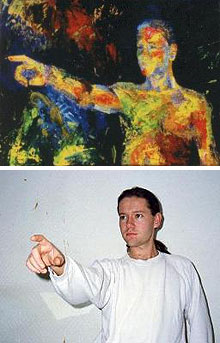Research
January 11, 2011
Viewing art is rewarding

In the Emory study, participants were asked to view a variety of images. Researchers compared brain participants' activity when viewing paintings versus photographs.
Art lights up our brains, researchers at the School of Medicine have found.
Imaging research has revealed that a region of the brain involved in experiencing pleasure, decision-making and risk-taking, is activated more when someone views a painting than when someone views a plain photograph.
Participants in a study viewed images from unknown and well-known artists such as Leonardo da Vinci, Paul Klee, Claude Monet, Pablo Picasso and Vincent Van Gogh, and photographs representing similar subjects.
This area of the brain is part of the "reward circuit," a set of regions of the brain involved in drug addiction and gambling, says senior author Krish Sathian, professor of neurology, rehabilitation medicine and psychology.
Many previous brain imaging studies on humans' responses to art have sought to examine the brain regions responsible for aesthetic preferences: whether an individual considers something beautiful or ugly.
Typically, study participants could be asked to view an image and then indicate how much they like it.
“We took an independent approach,” Sathian says. “This paper hasn't solved the problem of what art is. Rather, we can show that art does not activate just one process in the brain. There are a whole host of circuits involved.”
In the Emory study, researchers scanned participants’ brain activity while they were viewing a variety of images.
They were not asked during the scan itself if they liked what they saw, or if they considered it art.
Researchers compared brain activity when viewing paintings versus photographs. “The thinking is that the reward circuit evolved to shape our brains' decision making, to provide reinforcement when decisions turn out to be beneficial,” Sathian says. “We find that the brain's responses to art may have a connection to the reward circuit and perceptions of luxury or social status, independent of whether an individual rates the image in question highly.”
The results are published online in the journal NeuroImage.
